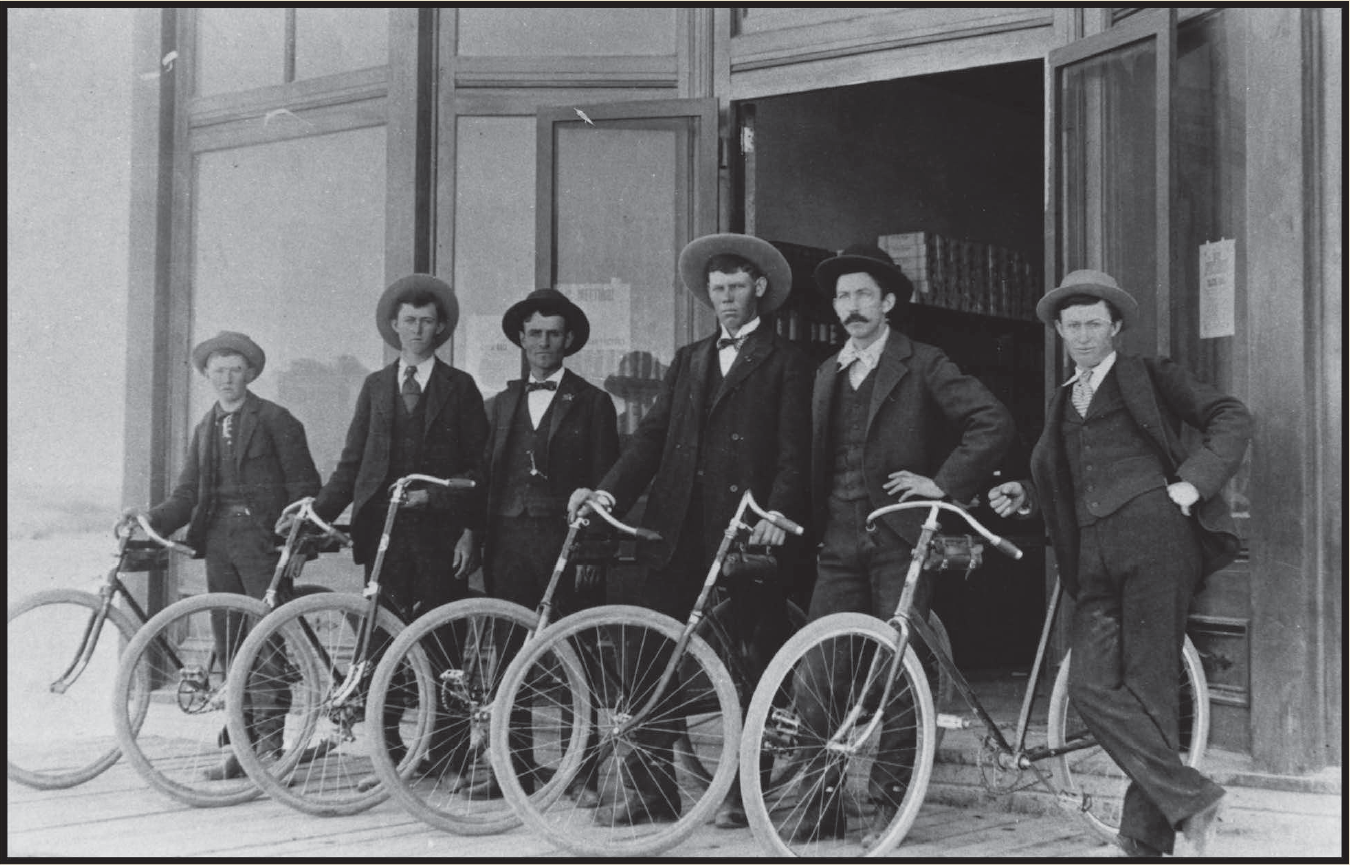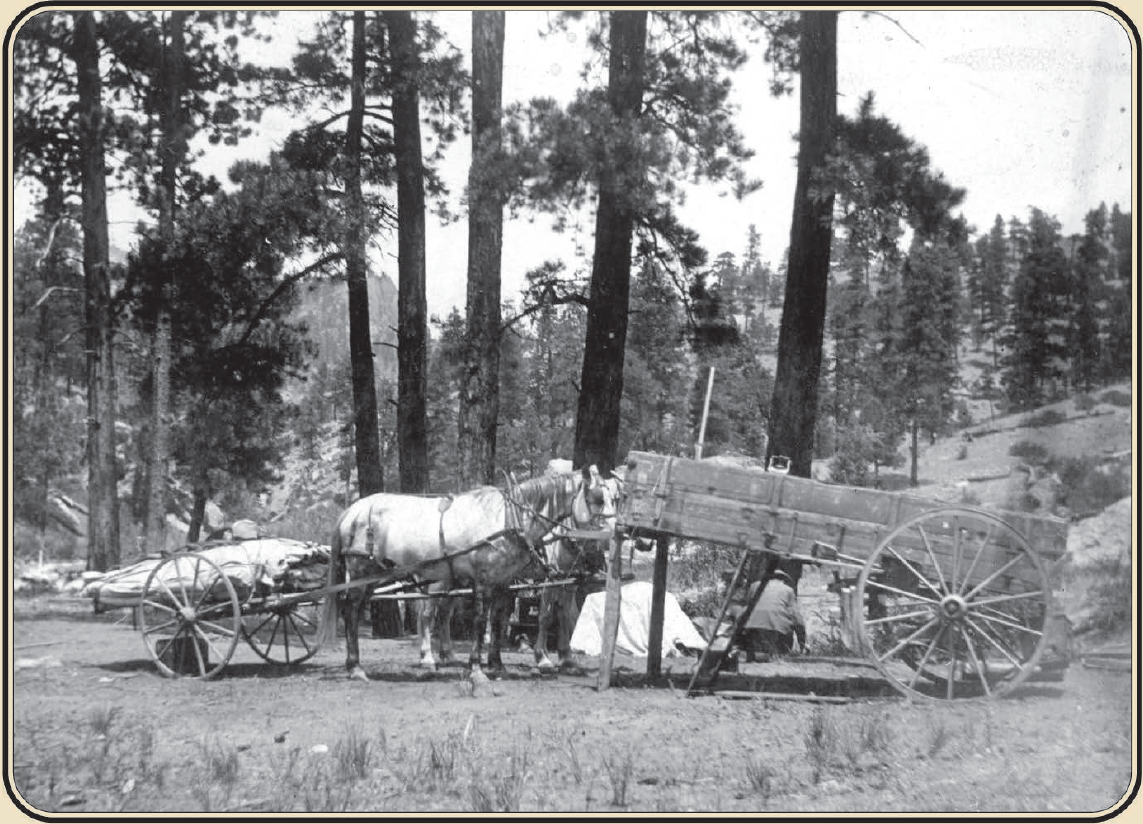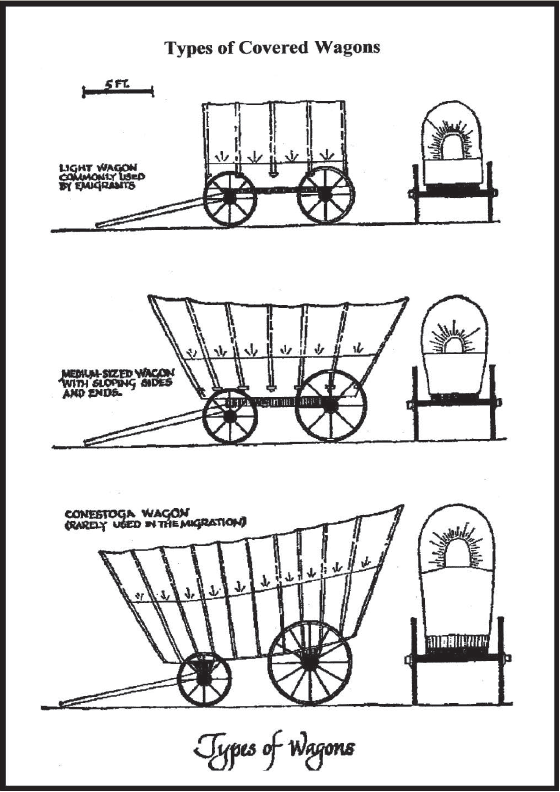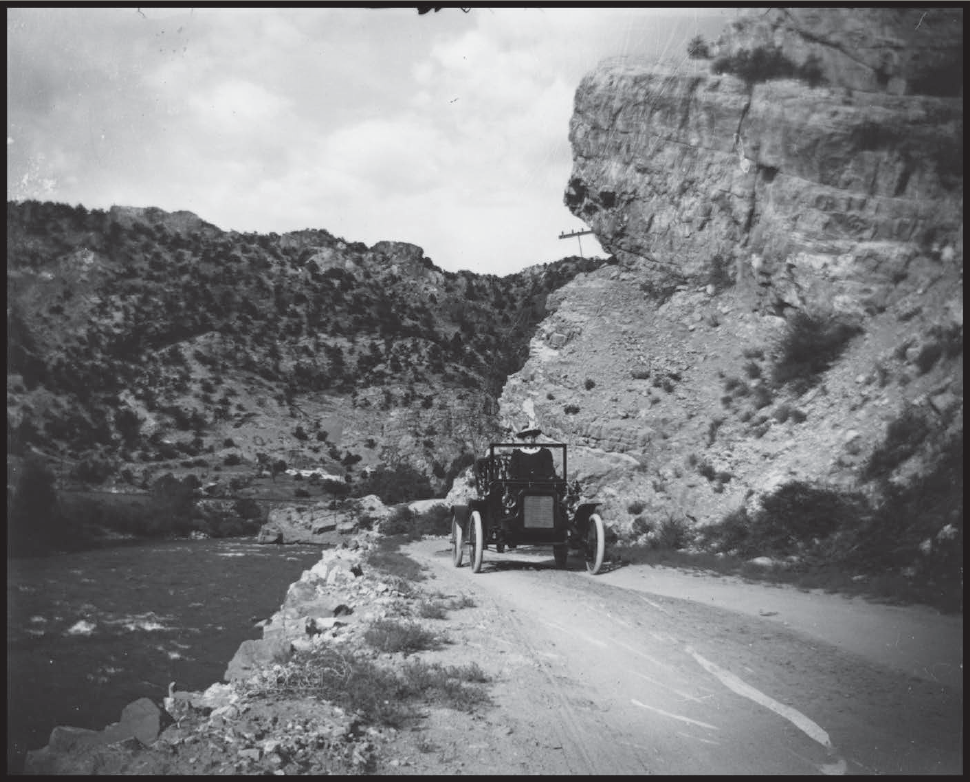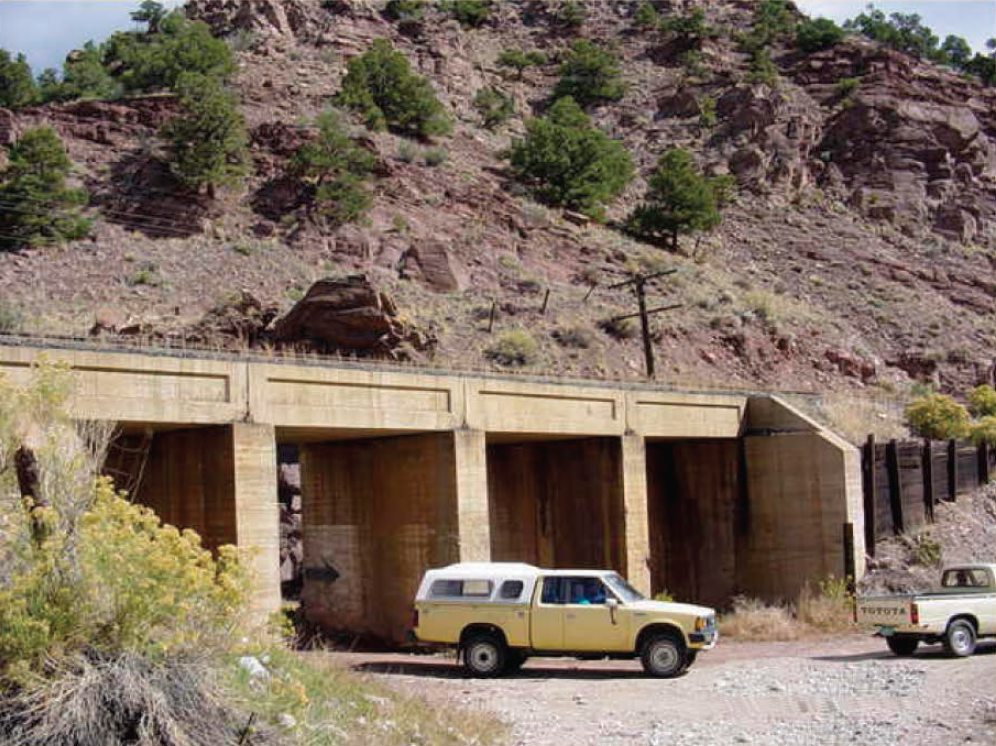Pathway into History
The Challenges of Getting from Here to There
No longer a dirt road
U.S. Highway 50 hosts cars, trucks, and machinery every day between Vallie and Wellsville. The section of the old road next to the river between Badger and Swissvale remains rough and is occasionally impassable.
Stagecoaches and Mud Wagons
Before 1880, the main transportation for the traveling public was by horse and wagon, horse and buggy, or stagecoach. Only hardy travelers dared the rough, dusty, and dangerous trip from Cañon City to Cleora to conduct business, go to market, or access the mining camps. The road was one way most of the time, and passing could be adventurous. Even as late as 1915, it took a farmer three days by freight wagon to transport goods and do business between Pleasant Valley and Cañon City.
Two Wheelers Carried People Everywhere
The bicycle came into its own in the era before automobiles. The simplest way to travel without a horse drawn vehicle was to straddle a bicycle and take off. The most ambitious riders would sometimes take very long trips. Bicycle races were held throughout the area, and bicycle clubs and associations drew the interest of many young men. Ladies did not rid bicycles except under special circumstances. A law was actually made in Salida that ladies could not wear “bloomers” to ride a “wheel.”
Commerce
Traveling the early road was not always pleasant. Heavy loads associated with moving farm goods, cattle, and mining ore caused the road to become deeply rutted in mud season and ground the road into dust during the dry summer.
Today, U.S. Highway 50 is well-maintained in summer and winter. The ranchers of the community no longer herd their cattle to market but haul them in large semi-trucks to sale barns and packers. The old
highway, current Fremont County #45, is much as it always has been. Often flooded and four-wheel drive-in certain sections, it serves as access to the river for fishermen and rafting enthusiasts.
The Bicycle was King
The young men of the region were quick to take advantage of the bicycle for traveling up and down the river road. Bicycle events included long distance marathons as well as races up and down the steep mountain roads. Best of all, they served as a means to travel to work and school when weather allowed.
Salida Regional Library Centennial Collection photo, circa 1890
Click the image above for a full-sized version
Camping in the Wilderness
Travelers not using public transportation camped in convenient spots along the road. The “Buckboard” wagons could be broken down and used for more than overland travel. The camp shown here was a long-term affair, indicated by tents in the background and horses using the front wheels of the wagon to haul loads.
Photo courtesy of Carol McNew, circa 1897
Click the image above for a full-sized version
Many Wagons Passed This Way
The muddy road witnessed the passage of many types of wagons. On wet days, the wheels would sink in the ruts.
The homesteaders and ranchers of the area took advantage of the rich mountain soil to produce potatoes, squash, lettuce, and other cash crops to sell in town. The roads sometimes called for four horses or mules where the road was steep and the load heavy.
Illustration courtesy “The California Trail,” by George R. Stewart
Click the image above for a full-sized version
Salida Regional Library Centennial Collection photo, circa 1906
Click the image above for a full-sized version
A Road for Relaxation
Motoring along the Arkansas in the early 1900s between Wellsville and Salida could be a pleasure if the car required no “get out and get under” to fix a problem. The automobile, when it would run, expanded traveling possibilities of the owners. The auto was just the machine for a quick trip to town for groceries and social events. When road conditions permitted, autos could “whiz” around at 15 mph.
Modern Travel on the Pathway
Today the Pathway is traveled by cars and trucks every day. The road requires four-wheel drive in some places, but is accessible from several points along Highway 50.
Photo courtesy of Carol McNew, 2002
